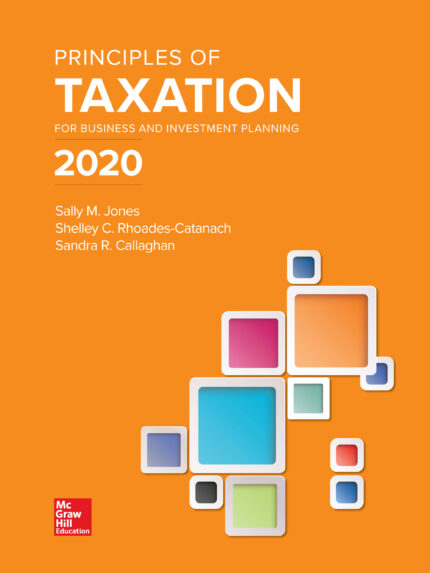Pearson’s Federal Taxation 2019 Corporations Partnerships Estates & Trusts 32nd Edition – Test Bank
Pearson’s Federal Taxation 2019: Comprehensive, 32e (Rupert/Anderson)
Chapter C5: Other Corporate Tax Levies
LO1: Use of C Corporation to Avoid Income Taxes
1) A high tax bracket individual can enhance the avoidance of income taxes through a C corporation by having the corporation retain its after-tax earnings rather than paying them out as a dividend.
Answer: TRUE
Page Ref.: C:5-2
Objective: 1
2) A high tax bracket individual can enhance the avoidance of income taxes through a C corporation by having the corporation retain its after-tax earnings so that when the individual dies, his or her heirs can liquidate the corporation and realize little to no gain because of a step-up in basis.
Answer: TRUE
Page Ref.: C:5-2
Objective: 1
3) A low tax bracket individual can enhance the avoidance of income taxes through a C corporation by having the corporation retain its after-tax earnings rather than paying them out as a dividend.
Answer: FALSE
Page Ref.: C:5-2
Objective: 1
4) In years beginning in 2018 through 2020, any minimum tax credit carryover from prior alternative minimum tax.years will be allowed to the extent of the regular tax liability plus 50% of the excess of the minimum tax credit over the amount credited against the regular tax.
Answer: TRUE
Page Ref.: C:5-2
Objective: 1
LO2: Personal Holding Company Tax
1) Wind Corporation is a personal holding company. Its taxable income for this year is $100,000. The corporation’s charitable contributions are $5,000 greater than its income tax charitable contribution deduction limitation. Wind’s UPHCI is $95,000, assuming no other adjustments must be made.
Answer: TRUE
Page Ref.: C:5-6 and C:5-7
Objective: 2
2) The personal holding company tax might be imposed
A) on both partnerships and corporations.
B) on companies whose gross income arises solely from rentals, if the lessors render no services to the lessees.
C) if more than 50% of the company is owned by five or fewer individuals for the entire year.
D) on small business investment companies licensed by the Small Business Administration.
Answer: C
Page Ref.: C:5-15
Objective: 2
3) Foster Corporation has gross income for regular tax purposes of $100,000, which includes a net Sec. 1231 gain of $10,000 and a net capital gain of $10,000. Ordinary gross income for personal holding company purposes is
A) $70,000.
B) $80,000.
C) $90,000.
D) $100,000.
Answer: B
Page Ref.: C:5-15
Objective: 2
4) Identify which of the following statements is false.
A) Askew Corporation has ten unrelated shareholders, each of whom owns 10% of the outstanding stock. This corporation is a personal holding company.
B) Stock owned by an individual, in addition to stock attributed from her spouse, parents, children, and siblings, are all counted towards whether or not the personal holding company stock ownership test has been met.
C) S corporations and tax-exempt organizations are excluded from the personal holding company (PHC) definition.
D) A person who holds an option to acquire stock is considered to own the stock for purposes of the PHC stock requirements.
Answer: A
Page Ref.: C:5-15
Objective: 2
5) Identify which of the following statements is true.
A) The personal holding company tax is levied to prevent closely held corporations from sheltering passive income.
B) Caleb Corporation is owned by a mother and her two daughters. It reports $100,000 of rental income; $30,000 of depreciation, interest, and property taxes on the rental real estate; and $10,000 of dividend income. Caleb Corporation is classified as a personal holding company.
C) Luke Corporation is owned by a father and his son. The corporation employs 10 individuals to provide public accounting services. Father and son make all of the work assignments for the professional employees. The professional fees earned by the corporation are personal holding company income.
D) All of the above are false.
Answer: A
Page Ref.: C:5-14
Objective: 2














Reviews
There are no reviews yet.